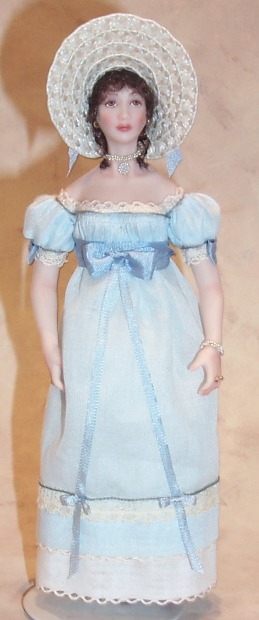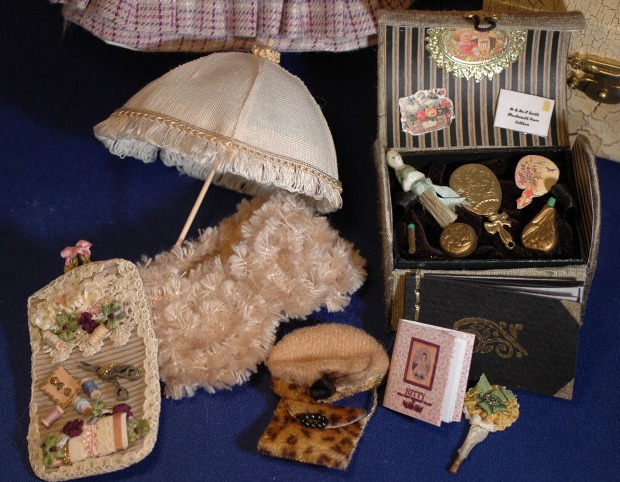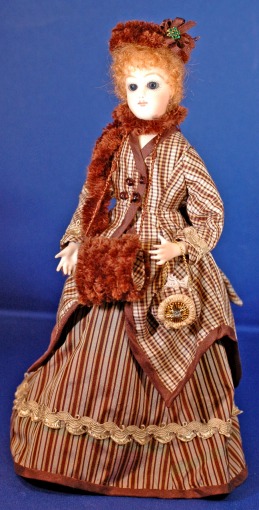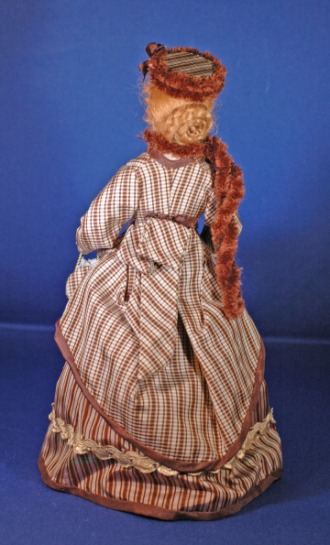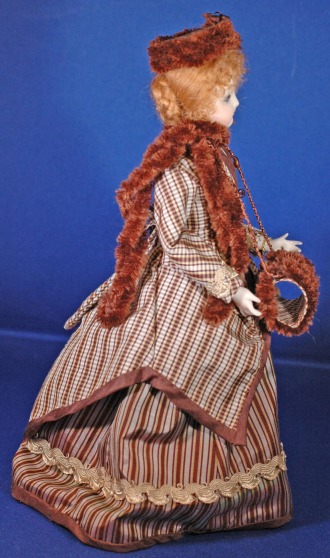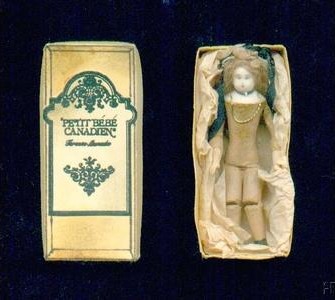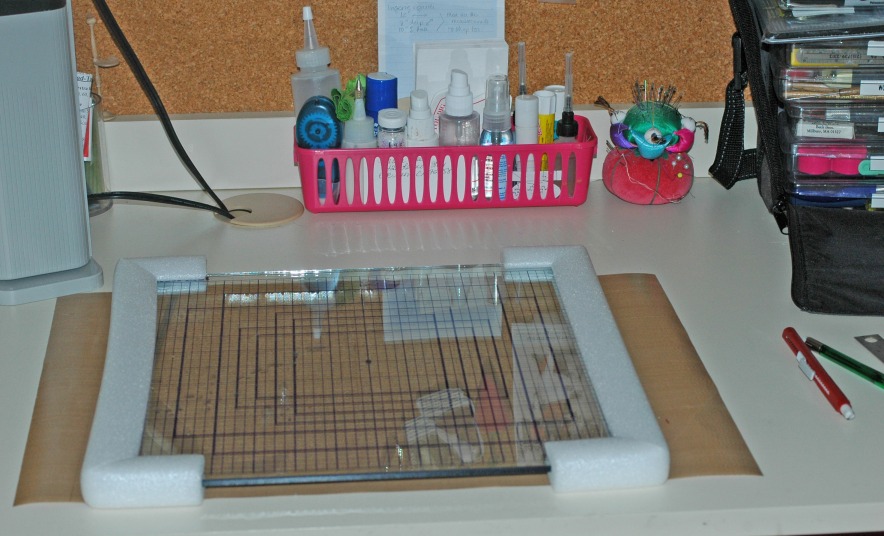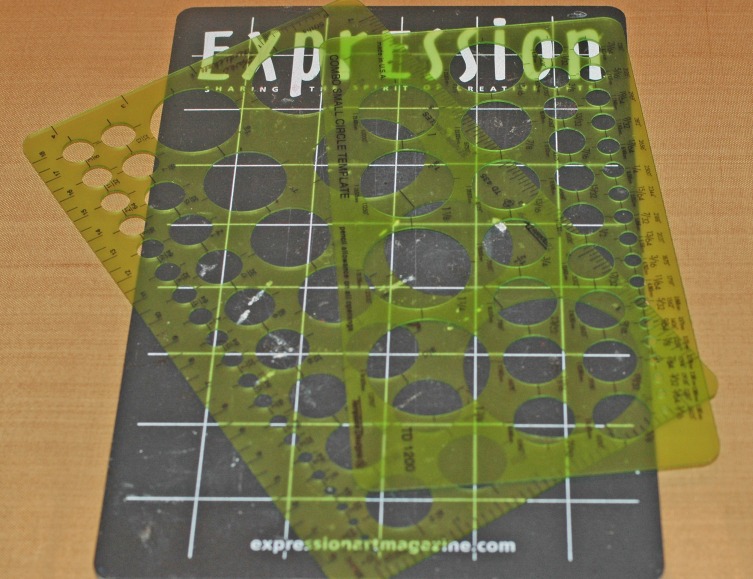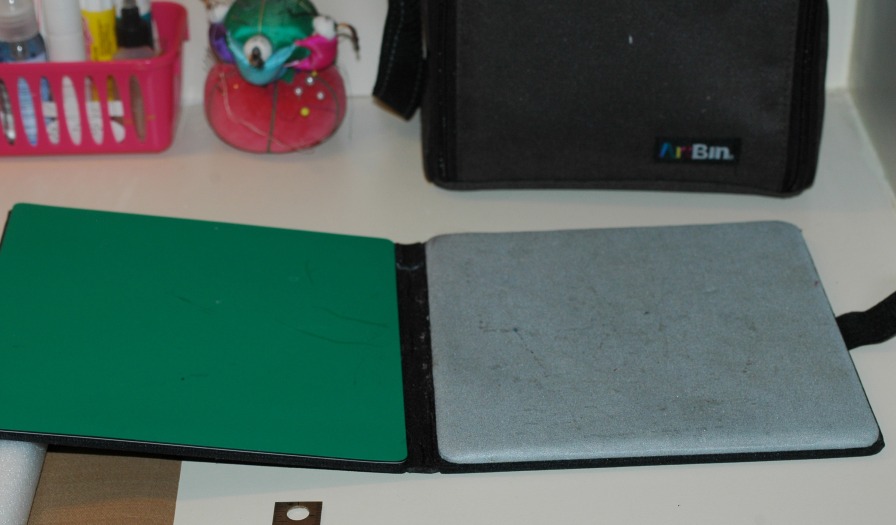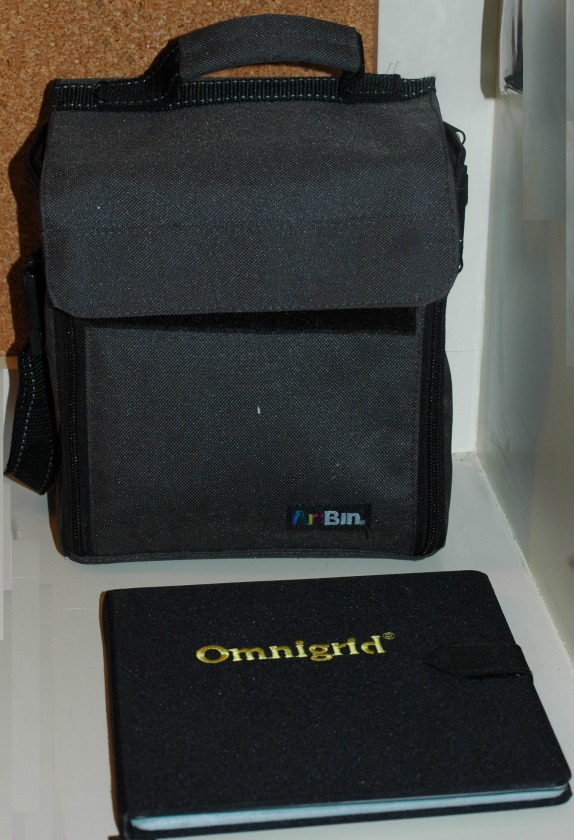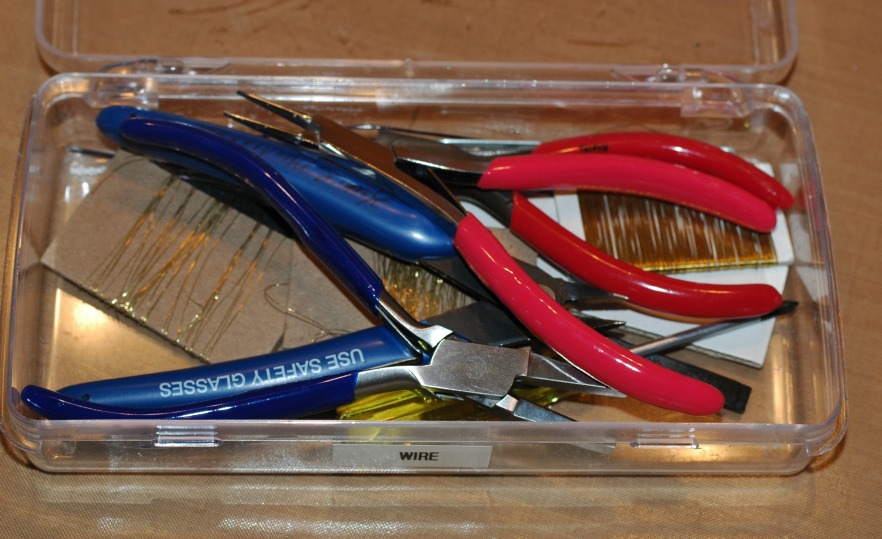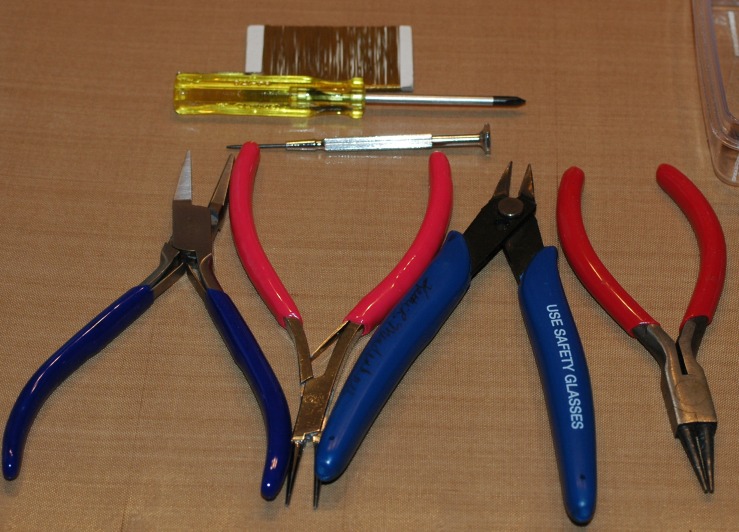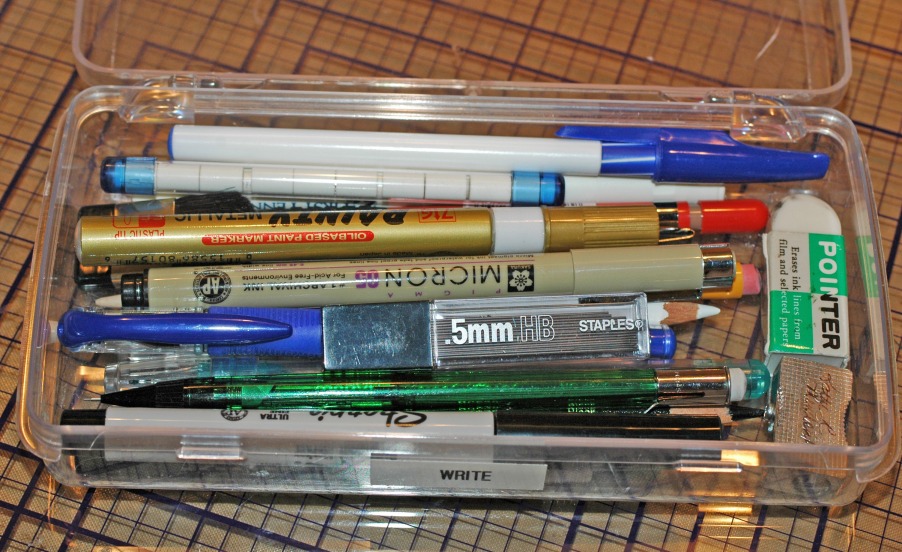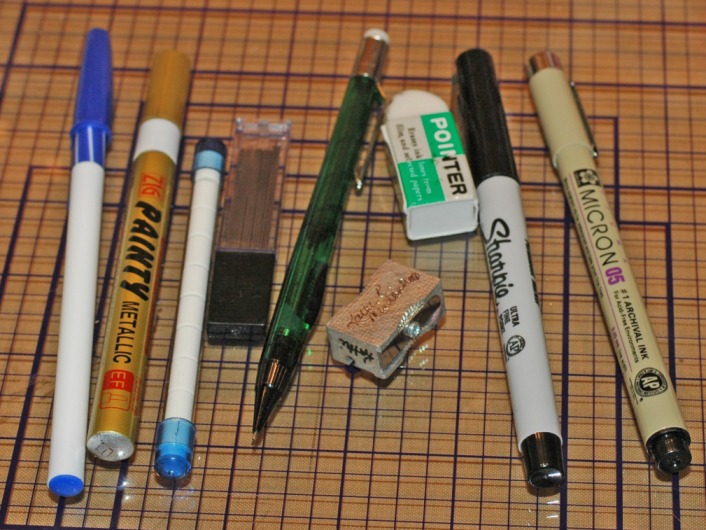 My dear friend Teresa Wenzel is a master doll milliner and an excellent maker of all things fine and delicate. This article she wrote for Doll Costuming years back in '03 but it is worth re-printing. Michelle
My dear friend Teresa Wenzel is a master doll milliner and an excellent maker of all things fine and delicate. This article she wrote for Doll Costuming years back in '03 but it is worth re-printing. MichelleYou can create the most beautiful and well fit hat designs for your dolls by simply easing the straw braid in and out as needed for your design. In designing doll hats, especially those of straw braid, I have found a wonderful use for my small treasures of fabrics, trims, laces and findings. Not large enough for most projects but too beautiful to waste I use these to embellish both cloth and straw hats. We have unlimited choices for our designs with so many colors and varieties of straw hat braid available to us today.
The straw braid is so versatile in designing not only for the antique reproductions but also for our modern dolls as well. And as it takes so little braid to make a small hat, it also takes not as much time as you would think. In measuring the doll’s head I use a circle template. I simply place the template over the doll’s head to the depth my design requires. I now use this size from the template to measure my progress as I sew the straw braid. Please remember to take into account the doll’s hairstyle when measuring.
Let us begin with a “Mary Stuart” style straw braid hat for a Petite Milette.
Matching thread - use single thread to sew straw (wax thread for strength or use a Quilter’s 100% cotton glazed thread
Milliners needle - these are long and sharp
10” of size 23 hat wire
Trims and embellishments of your choice
 Trim end and dot with glue and turn under to secure.
Trim end and dot with glue and turn under to secure. Continue adding 6 to 7 rows tapering ever so slightly at this point to go from a flat disc shape to a curved dome shape. Once the curve is made do not ease straw in but sew to form the sides of the crown. Ease out in the last few rows to reach the head size of 1-5/8” diameter. A hat form may help you in this process.
Continue adding 6 to 7 rows tapering ever so slightly at this point to go from a flat disc shape to a curved dome shape. Once the curve is made do not ease straw in but sew to form the sides of the crown. Ease out in the last few rows to reach the head size of 1-5/8” diameter. A hat form may help you in this process.  Begin brim by folding braid back on itself and stitching under the preceding row, easing in straw braid to form the wide brim. Stop this row at opposite side of hat just below center of braid disc as shown in the following diagram:
Begin brim by folding braid back on itself and stitching under the preceding row, easing in straw braid to form the wide brim. Stop this row at opposite side of hat just below center of braid disc as shown in the following diagram:

After completing 3 fold backs on one side, rather than folding back when you come to the opposite side again, continue this row down and around back of hat and then again, all around hat, making an additional 2 rows as shown in this photo.
 Attach wire to the underside of brim edge with an overcast stitch.
Attach wire to the underside of brim edge with an overcast stitch.  Shape wired edge brim to your design shape. Glue or sew lace to underside of brim to cover wire. Decorate to your hearts content!
Shape wired edge brim to your design shape. Glue or sew lace to underside of brim to cover wire. Decorate to your hearts content!By Teresa Wenzel
Terry sells some of her fabulous Antique laces and trim on her Etsy site: Evertales.etsy.com
She also has doll millinery patterns for sale on minidolls.com.

Just as a gentle reminder, that tutorial was written to help to stimulate your creativity.
This Tutorial, Pictures, & Instructions are copy-righted & are not to be used as a tutorial of your own.
This means you may not copy and post this tutorial to your own website, or print it out and sell or distribute it as your own.




